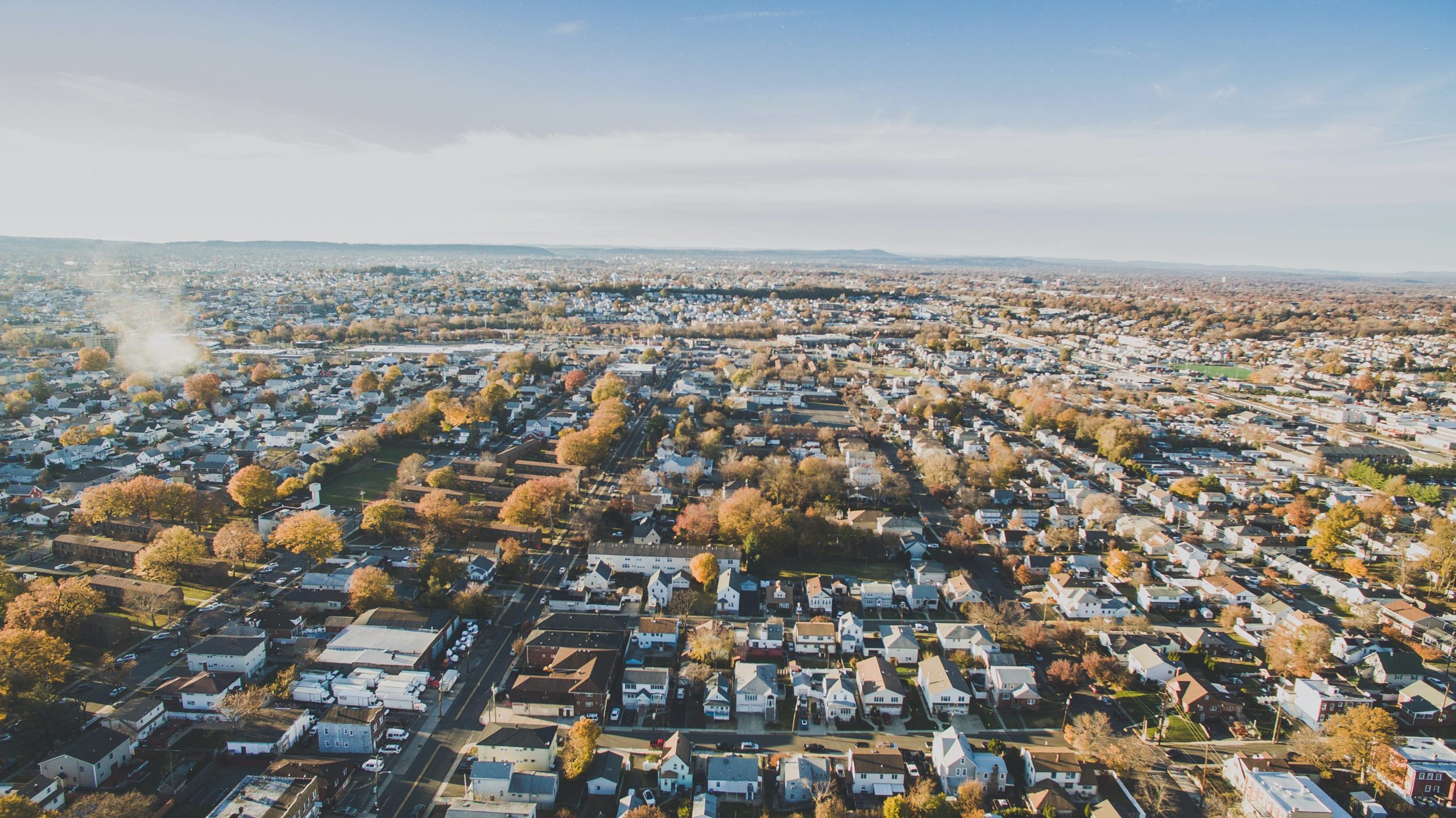Removing Barriers to Higher Education: Expanding In-State Tuition to Dreamers in Virginia
Date: February 7, 2020

With the state’s unemployment rate at just 2.6 percent—nearly one percent below the national average—employers and communities across Virginia are feeling the pinch as businesses face worker shortages that limit their ability to grow and compete. To address this challenge, it is imperative that state policies leverage local talent by increasing access to higher education.
Granting access to in-state tuition to all Virginians is an important step toward meeting this need and would greatly benefit the state’s economy.
By passing House Bill 1547 and Senate Bill 935, Virginia would join nearly 20 states—including Florida, Oklahoma, Kansas, Nebraska, and Texas—that recognize the financial barrier that out-of-state tuition imposes on undocumented students and have made tuition equity state law.
In these states, there is clear evidence that tuition equity policies are already achieving their goal of increasing college enrollment for disadvantaged students and bolstering the state’s workforce. Previous studies have found that Latino non-citizens living in states with in-state tuition policies are anywhere from 31[1] to 54 percent[2] more likely to be enrolled in higher education than their peers in other states. Research shows that these policies also reduce high school dropout rates among certain immigrant students by as much as 14 percent.[3] The additional students who could potentially enroll in and complete college as a result of expanded in-state tuition access would earn millions of dollars in additional income—translating into meaningful financial benefits for all Virginia residents.
This report uses data from the American Community Survey, as well as the Chronicle of Higher Education, to estimate the positive impact of passing a tuition equity policy in Virginia.
If all Virginia high school graduates had access to in-state tuition, NAE’s new research finds that:
- More than 3,700 Virginia students would benefit from an in-state tuition policy. Based on the college enrollment rates of students from similar demographic and socioeconomic backgrounds, we estimate that an additional 3,715 undocumented students in the state would be able to enroll in college.
- Earning a college degree by paying in-state tuition would boost the earnings of Virginia’s undocumented students by more than $32 million annually. If an in-state tuition policy covering undocumented students became law in Virginia, at least 2,619 of these newly enrolled students would go on to graduate college within six years. Collectively, that group would earn $32.2 million in additional income annually following graduation.
- The additional wages earned by these college graduates would elevate their spending power by more than $24 million annually. After graduation, these students would hold an additional $24.6 million in income that could be reinvested into the state and local economy through consumer spending.
- In-state tuition access could raise an additional $7.6 million per year in federal income taxes and state and local taxes. The higher wages of new graduates would allow them to spend more as consumers, benefitting the commonwealth in the form of sales, excise, and property tax revenues, among others. We estimate that the 2,619 students who would benefit from tuition equity and graduate within six years would pay as much as $4.6 million in additional federal income taxes as well as an additional $3 million in Virginia state and local taxes.
The results are clear. The additional students who could potentially enroll in and complete college as a result of a change in Virginia’s law would earn millions of dollars in additional income—translating into meaningful financial benefits for all of the state’s residents.
Methodology
Estimating the Number of Students Eligible for In-State Tuition and Tuition Opportunity Policies and Expected Graduation Rates
The number of people eligible for Virginia’s potential tuition opportunity program was estimated assuming that the beneficiary population would be undocumented immigrants between the ages of 16 and 44. Estimates for this were generated using NAE’s methodology used to identify undocumented individuals in U.S. Census microdata.
Identifying the Undocumented Population
Using data from the 1-year American Community Survey for each year over the period 2014-2018, we constructed a 5-year sample of microdata in order to pool a large enough sample from which we could derive accurate estimates for the undocumented population in Virginia. To this dataset, we apply the methodological approach outlined by Harvard University economist George Borjas to arrive at an estimate of the undocumented immigrant population in the overall United States and individual states.[4] The foreign-born population is adjusted for misreporting in two ways. Foreign-born individuals who reported naturalization are reclassified as non-naturalized if the individual had resided in the United States for less than six years (as of 2018) or, if married to a U.S. citizen, for less than three years. We use the following criteria to code foreign-born individuals as legal U.S. residents:
- Arrived in the U.S. before 1980
- Citizens and children less than 18 years old reporting that at least one U.S.-born parent
- Recipients of Social Security benefits, Supplemental Security Income, Medicaid, Medicare, military insurance, or public assistance
- Households with at least one citizen that received SNAP benefits
- People in the Armed Forces and veterans
- Refugees
- Working in occupations requiring a license
- Working in occupations that immigrants are likely to be on H-1B or other visas, including computer scientists, professors, engineers, and life scientists
- Government employees, and people working in the public administration sector
- Any of the above conditions applies to the householder’s spouse
- The remainder of the foreign-born population that do not meet these criteria are reclassified as undocumented. For the purposes of this analysis, we limit the population of interest to those between the ages of 16 and 44 with a high school degree or its equivalent or some college experience, but lacking a bachelor’s degree.
To estimate the share of this population that would enroll in higher education under this policy, we assume that easing the financial burden will result in the same college attendance rates as for the non-citizen population.
To estimate the share of enrollees that would ultimately graduate, we apply statistics from the Chronicle of Higher Education regarding public 4-year colleges.[5] This estimate gives us the number of additional successfully graduating students within 4 years as well as within 6 years of their enrollment that would be attributable to the state’s tuition opportunity program.
Given that current U.S. Census data does not include information on where an individual completed/attended high school or received their GED equivalency, we are unable to target that specific population. We are, however, confident that we have estimated the likely eligible population who would take up the opportunity to enroll and graduate from higher education based on their income and past educational experience.
Wage Premium
We use regression analysis to arrive at the total yearly gain in income resulting from obtaining a college degree. Our sample includes full-time employed non-citizen workers aged 25 to 65. The model regresses the log of wages on education and controls for race, sex, age, marital status, and English language skills. Our analysis of the wage premium that non-citizens gain from earning a college degree shows that each graduate in Virginia would earns $13,684 in additional annual earnings each year (in 2018 dollars) as a direct result of earning a bachelor’s degree.
Tax Estimates
Figures on the additional taxes that would be paid as a result of this policy were calculated using the increase in wages mentioned above multiplied by the per capita incidence of state and local taxes in Virginia as well as the federal income tax rate. The state and local tax incidence rate used was taken from the Tax Foundation, one of the country’s leading independent tax policy research organizations. This percentage represents the total amount of taxes paid to state and local governments divided by the total amount of income earned by all state residents. The state and local taxes included in the Tax Foundation’s calculation include income, sales, excise, property, public utilities, motor vehicle, death, severance, and other licensing taxes.[6] The federal income tax rate was also taken from the Tax Foundation. [7]
[1]Kaushal, N. (2008). In-State Tuition for the Undocumented: Education Effects on Mexican Young Adults. Journal of Policy Analysis and Management, Vol. 27, No. 4.
[2] Flores, S. M. (2010). State Dream Acts: The Effect of In-State Resident Tuition Polices and Undocumented Latino Students. The Review of Higher Education, Vol. 33, No. 2.
[3]Potochinick, S. (2010) How States Can Reduce the Dropout Rate for Undocumented Immigrant Youth: The Effects of In-State Resident Tuition Policies. Paper presented at the APPAM Conference.
[4]George J. Borjas, “The Labor Supply of Undocumented Immigrants,” NBER Working Paper (National Bureau of Economic Research, Inc, 2016).
[5]The Chronicle of Higher Education, “College Completion: Virginia” (2013 Rates). Available here: http://collegecompletion.chronicle.com/state/#state=VA§or=public_four.
[6]Tax Foundation, “Taxes in Virginia.” Accessed on February 4, 2020. Available at: https://taxfoundation.org/state/Virginia/
[7]Robert Bellafiore, (2018), “Summary of the Latest Federal Income Tax Data, 2018 Update.” Tax Foundation, November 13, 2018. Available online: https://taxfoundation.org/summary-latest-federal-income-tax-data-2018-update/






